Home → Windows → Windows FAQs → What different types of windows are there?
There are many different types of windows, distinguished from one another by their functional design and the number of glass panes used in their glazing. Different types of windows suit different houses, with some working well in older, period properties, while others give homes a more modern look.
In this article, we’ll look at four common design styles and three types of glazing to give you an idea of what different windows are out there, how they look and how they perform.
8 Window Types In The UK
| Type of Window | Description |
| Casement | This style is the oldest and most adaptable, typically hinged on the side to swing open like a door, though it can also be configured to open from the top or bottom. |
| Tilt and Turn | Hinged on the side to swing completely open, and hinged at the bottom to tilt inward for added ventilation. |
| Sash | Two panels that move vertically, sliding up and down, or a combination of one fixed panel alongside one that slides. |
| Sliding | The frame slides sideways, similar to a compact version of a patio door. |
| Bay | Extends outward from the wall to the floor, with additional brickwork extending along with it. |
| Bow | Extends outward from the wall without any additional brickwork. |
| Skylight | Either sits flush with the roofline or juts out from the roof as a dormer. |
| Transom | The window positioned above a doorway, commonly referred to as a fanlight. |
Different Window Type Design Styles at KLG Rutland
While many people think of the glass when they think about windows, it’s actually everything around the glass that make a significant difference to how the windows look and operate. If you’re considering buying new windows, the thing that you’ll want to get right before anything else is the design style.
Casement windows
Casement windows are one of the most common types found in modern properties. The windows themselves are connected to the frame by two or more hinges and open outwards. They can be installed in a number of sizes and combinations. For example, you could have one window on its own, two large casement windows next to one another in a single unit, or two large windows separated by a smaller window that opens upwards.
While casement windows are commonly made from white uPVC, they can actually be manufactured in a range of different colours to suit the aesthetic of your home. In this way, they can blend in with period features of a property or look ultra-modern, depending on the requirements of the homeowner.
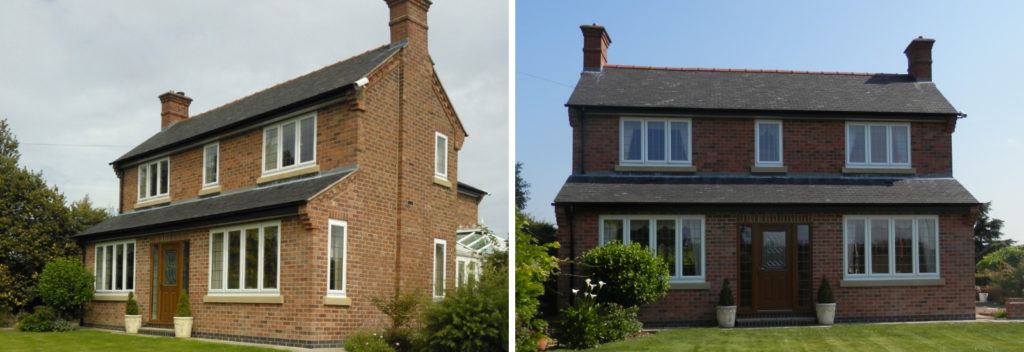
Types of Casement Windows:
- Side Hung: This common type of casement window is hinged at the side, allowing the opener to swing outwards.
- Single Casement: The simplest window style featuring one frame, typically side-hung.
- Double Frame or French Casement: Comprises two side-hung casement frames with handles in the middle; opens outwards to each side, forming a large aperture with a central mullion.
- Top Hung or Awning Window: Hinged at the top of the frame, this window style swings outward from the bottom, ideal for wet climates as it prevents rain from entering.
- Bottom Hung or Hopper Window: Hinged at the bottom, this window style opens from the top of the frame, enhancing ventilation and offering a safer option for upper floors.
- Flush Casement: The window opener closes flush into the frame, creating a sleek appearance, unlike standard casement windows which sit proud of the frame when closed. The flush casement window is growing in popularity for its modern finish, particularly when combined with a slim aluminium frame.
Flush sash windows
Flush sash windows are a type of casement window, but one that offers a slightly different look to the regular version. While the name might not sound familiar, it’s actually fairly descriptive. The ‘sash’ is simply an individual panel, so a ‘flush sash’ is a window with panels that are smooth (‘flush’) against the frame when closed. This is a contrast to regular casement windows, where the sash often extends out a little way.
There are a number of reasons to choose flush sash windows. One is that your existing windows are flush sash and you want to maintain that distinctive look. Another is that KLG Rutland flush sash windows come with excellent thermal and security ratings.
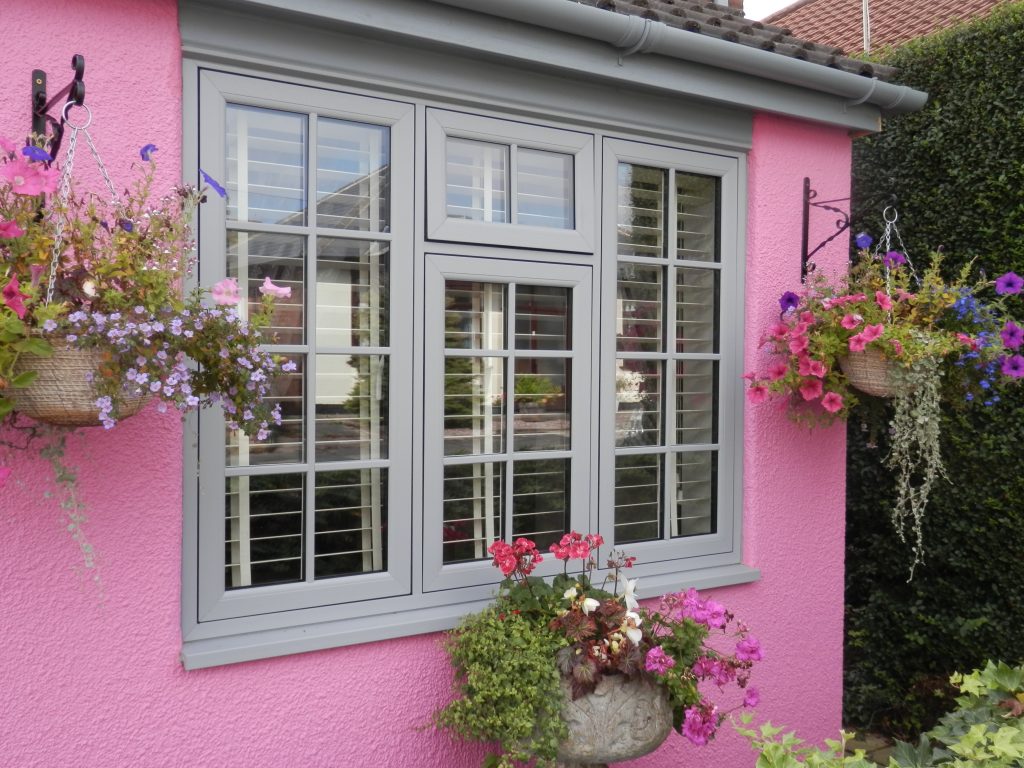
Types of Flush Sash Windows:
- Single Hung: One sash pane slides open while the other remains fixed.
- Double Hung: Both sash panes are operable, sliding open to allow ventilation at both the top and bottom of the window.
- Dummy Sash: Styled to resemble a standard sash window, however, the sashes are fixed and do not open. This design is often used to maintain symmetry or consistent sightlines across a property.
Sliding sash windows
Sliding sash windows are a complete departure from casements. Like flush sash, the clue to what makes these windows distinctive is in the name. In this instance, the ‘sashes’ – the window panels – slide to open, rather than opening outwards as they do in casement windows. In most designs, the windows slide upwards to open a gap at the bottom.
Sliding sash windows are often considered a ‘conservation window’ because they appear on many period properties and are less common in modern homes (though there’s no reason that they couldn’t be used). Because of this, it’s common for people to look for modern versions when they come to update their home. KLG’s sliding sash windows have none of the thermal and security concerns of older models, being made out of the highest quality materials with the latest technology behind them.
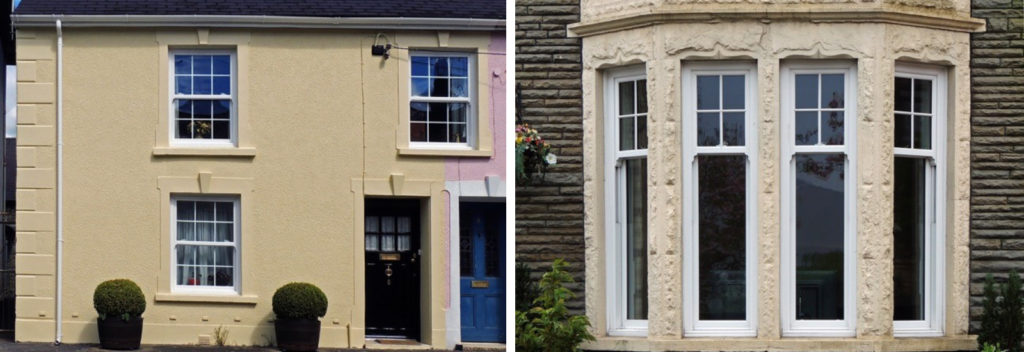
Georgian windows
Unlike the other window types we’ve looked at thus far, the Georgian style has nothing to do with the functionality of the window. Instead, it’s all about the aesthetics – Georgian windows have the look of multiple panes of glass held together to make one larger panel.
Some Georgian windows can be made with a separate pane of glass for each small panel, but there’s no need to go to that expense in the modern age. Manufacturer’s like KLG provide authentic looking outer bars that make a single pane of glass look just like a traditional Georgian window. Like flush sash windows, this design is often sought after for period properties.
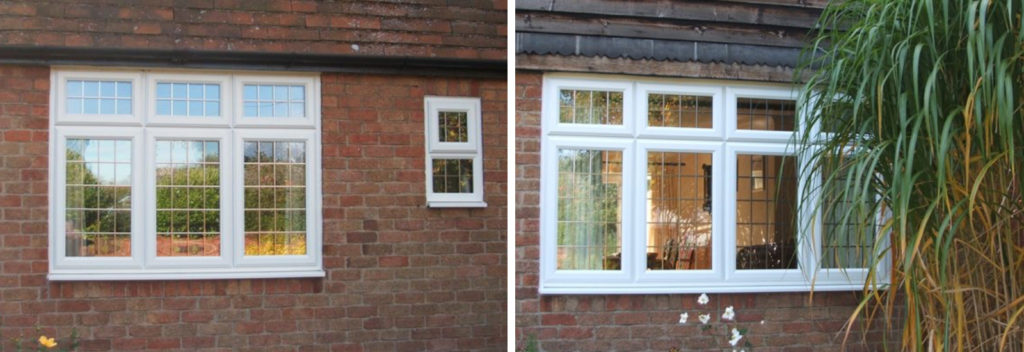
Different Types of Window Glazing
Along with the design, different types of windows can also be differentiated by the type of glazing used for them. In the past, windows were commonly single-glazed, which meant they had just a single pane of glass. These windows were terrible at conserving heat and keeping out noise, so the main types on the market now are all different kinds of innovations to make windows more secure and efficient.
Double glazing
The majority of windows out there are double-glazed. This is the standard for many manufacturers, including KLG Rutland. Installing double glazing windows for your Nottingham property cuts out many of the problems of single glazing through the inclusion of a second pane of glass and an insulating layer between the two. If you want to find out more about how it works, click here.
Triple glazing
If you pay a bit more, you can also get triple-glazed windows. These windows add a third pane of glass and another layer of insulation, making them more efficient than standard double glazed windows. Triple glazing is a more modern innovation, but it’s not for everyone. Read about the pros and cons of choosing it over double glazing here.
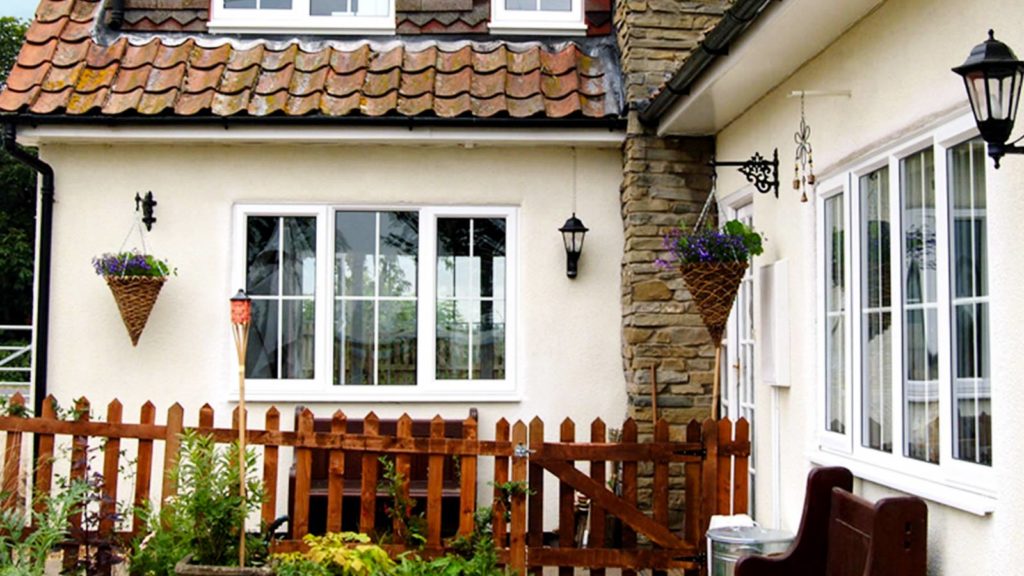
Acoustic glass
The final glazing type to discuss is less common than both of those we’ve mentioned, but it deserves more attention. Acoustic glass is a type of double glazing that is specifically manufactured to cut out outside noise.
It achieves this because the two panels of glass are different thicknesses (normally 6mm and 4mm), which means that each one is better at blocking out different noise frequencies. If both the panes are the same thickness, as in standard double glazing, they’ll be better than a single pane but will be best at filtering out the same sounds. By varying the thickness, windows can catch a wider array of sounds, making the room quieter overall.
All of the above design styles and glazing types can be combined in different ways to allow you to create the perfect windows for your home. Contact KLG to get a quote or click here to see more of our windows.


